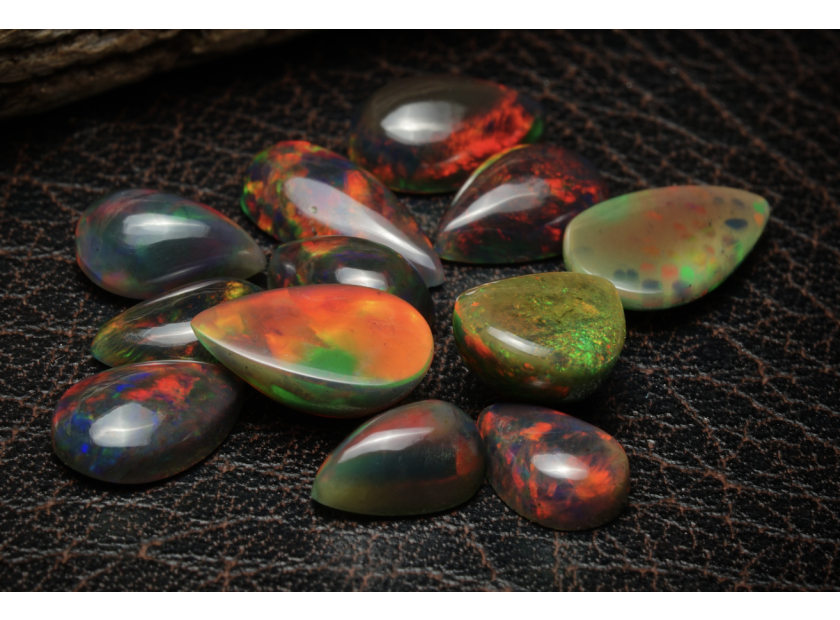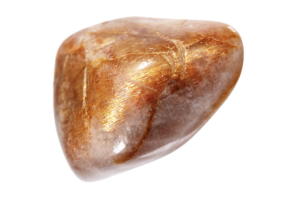USD
/
USD
/
Shipping to:
Currency:
What Is the Difference Between Opal and Fire Opal?
Opals have long fascinated jewelry lovers with their one-of-a-kind shimmer and spectrum of color. But if you’ve come across the term “fire opal,” you might be wondering—how is that different from a traditional opal? While they may sound similar, these gemstones have some notable differences. Let’s explore how they compare in terms of appearance, formation, and use in jewelry.
Understanding Opals
Opals are formed from hydrated silica and are famous for their dazzling “play-of-color”—that ever-changing rainbow effect you see when the stone moves in the light. This is caused by tiny silica spheres diffracting light. Most traditional opals come from Australia, but they’re also found in Ethiopia and Mexico.
What Is a Fire Opal?
Fire opals are a unique type of opal, best known for their fiery body color—typically vivid orange, red, or yellow. Unlike traditional opals, they don’t always show play-of-color. What sets them apart is the intensity and transparency of their body tone. Most fire opals come from volcanic areas in Mexico, making them relatively rare and highly prized for their warm glow.
Key Differences Between Opal and Fire Opal
- Body Color: Traditional opals usually have a pale or milky base with iridescent flashes, while fire opals have strong body colors in warm hues like red, orange, and yellow.
- Play-of-Color: Many opals exhibit play-of-color as their standout feature. Fire opals might show it, but many are valued solely for their vibrant body color.
- Transparency: Fire opals are often transparent or translucent, whereas traditional opals tend to be more opaque.
- Origin: While most opals come from Australia and Ethiopia, fire opals are primarily found in Mexico.
- Jewelry Application: Traditional opals are often cut en cabochon to highlight their play-of-color. Fire opals, thanks to their transparency, are typically faceted to enhance their brilliance. For examples of stunning styles, check out gemstone engagement rings.
Do All Fire Opals Have Play-of-Color?
No, and that’s one of the biggest misconceptions. While some fire opals do display play-of-color, many don’t. Those that do are sometimes referred to as “precious fire opals.” But even without this trait, their bold, clear colors make them a favorite for modern jewelry lovers.
Price and Value
Several factors influence the value of both opals and fire opals—like color intensity, clarity, size, origin, and whether play-of-color is present. Vivid red fire opals with good transparency are especially rare and can command high prices. Similarly, traditional opals with dramatic color play and distinct patterns are highly collectible. If you’re browsing gift ideas, take a look at these gorgeous gemstone rings.
Care and Maintenance
Opals and fire opals rank between 5.5 and 6.5 on the Mohs scale, making them softer than many other gemstones. That means they need some extra TLC. Avoid harsh chemicals, prolonged exposure to water, and direct sunlight. Clean them gently with a soft, damp cloth. It’s also smart to store them separately to avoid scratches.
Choosing the Right Gemstone for You
Whether you prefer the shifting shimmer of a traditional opal or the bold, glassy glow of a fire opal, it comes down to personal style. If you’re drawn to vibrant and unique stones, either option is a beautiful choice. Looking for something that breaks tradition? Explore non-traditional engagement rings for more inspiration.
Frequently Asked Questions
Can opals be treated or enhanced?
Yes, some opals undergo treatments to improve appearance and durability. Common enhancements include oiling, waxing, or resin filling. It’s important to buy from trusted sources that clearly disclose any treatments. To compare natural vs lab options, check out lab-grown diamonds vs. gemstones.
Are fire opals good for engagement rings?
Fire opals are stunning, but they are softer than other gemstones. If you choose one for an engagement ring, go with a protective setting and be mindful of wear. They work best for occasional wear or as part of a curated jewelry collection.
How do synthetic opals compare to natural ones?
Synthetic opals are lab-made but closely resemble natural opals in structure and appearance. They tend to be more affordable and can offer enhanced durability, but collectors and enthusiasts often prefer the uniqueness of natural stones.
Where do opals and fire opals come from geologically?
Opals typically form in sedimentary environments where silica-rich water seeps into rock voids and solidifies. Fire opals are often found in volcanic rock. If you’re curious about the science behind gemstone formation, check out how gemstones and diamonds are formed.








